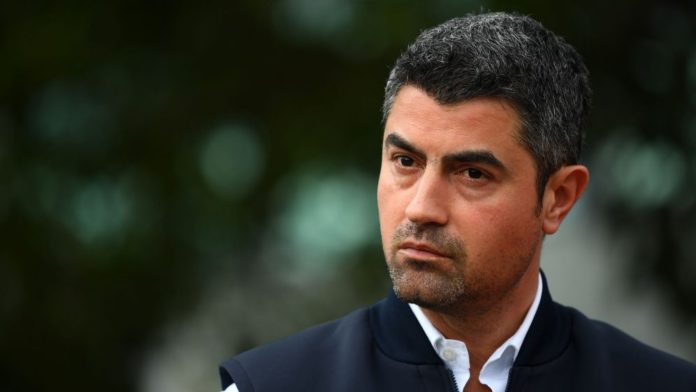The Fédération Internationale de l’Automobile (or FIA; the governing body for Formula One) announced on Feb. 17 that Michael Masi would not be continuing his tenure as race director for Formula One, and announced the hiring of Niels Wittich and Eduardo Freitas, who will share and alternate the role of race director through the 2022 season. The race director heads a team called race control during an F1 race, and race control’s whole job is to monitor every part of the race (from the drivers on track to the crews’ activities in the pit lane) for safety and regulation purposes. The FIA’s decision on the new race directors follows months’ and races’ worth of questionable decisions, including Masi’s messy handling of the safety car regulations in the 2021 Abu Dhabi Grand Prix, which is a direct cause of backlash and negative views of the sport. Masi’s controversial decision was described as tarnishing the reputation of the championship and the sport.
Masi’s decision and application of the safety car at Abu Dhabi was wrong, and directly affected not just who should have won that race, but every car and team who had goals and aspirations other than first place. Masi’s decision showed that if a team principal pressures enough, then rules, regulations, and team strategy, a lot of what makes the sport of Formula One so great, can all be tossed out the window.
So yes, Masi had to go. More importantly, the FIA had to do something to show that issues were being addressed and that support for all the teams was going to be a focus for the 2022 season and onward. The solution of having two race directors comes with initial skepticism. More voices could lead to more inconsistencies as to why and when certain rules are applied; however, it’s better to be unsure about why and when inconsistencies happen because of the different directors agreeing on what is fair, than to know the answer is because of which team was asking the single race director, which, under Masi, was becoming a problem.
Wittich and Freitas, the new race directors, come with years of experience in racing and race control. Wittich was previously the race director of the Deutsche Tourenwagen Masters (DTM), a German grand touring car racing series, and served as the director for Formula 2 and Formula 3 championships, both of which are leagues designed to have a lower financial entry point for teams and often serve as the training grounds for future F1 drivers. Eduardo Freitas served as race director for the World Endurance Championship (WEC) for close to ten years. Freitas has worked in numerous positions throughout the automobile championships, starting as a mechanic, a steward (someone who helps the race director oversee the action on the track), and then as race director in multiple automobile championships and the GT World Challenge Europe (a league designed for modified road cars) before his time at the WEC. Freitas is respected and appreciated among the referees and officials for being strict on rules, especially on the rules that regard safety.
Guiding and advising Wittich and Freitas as senior race advisor will be Herbie Blash, who has been in and out of the Formula One scene since the late 1970s, and has a history of being on the Brabham F1 team, which was infamous for bending or breaking rules such as adding water-cooled brakes, running a lighter car, adjustable suspension, etcetera. Blash will provide an old-school appeal and sense of honour to the F1 Championship with his experience as an advisor and director under previous race director Charlie Whiting, as well as his knowledge of most of the teams’ principals ever since they themselves were just starting out in the sport.
Wittich has shown his experience and handling of the safety regulations throughout the first two races, especially in the Saudi Arabia Grand Prix weekend with crashes in Qualifying on Saturday. There was a yellow-flagged crash from Williams Racing driver Nicholas Latifi, and an immediate red flag and full session stop after Haas driver Mick Schumacher took a nasty crash into the walls that saw him in hospital and out of the race Sunday. Wittich handled the Schumacher crash on-track personally, taking the time to talk to the safety crews to make sure the oil and gas spills were properly cleaned, even when the racing paddock thought the track was safe enough.
Sunday was an epic, scrappy race that saw another crash from the great Canadian disappointment, Nicholas Latifi, that had Wittich and the stewards deploy a quick safety car. Each position was a battle to hold and overtake throughout the entire race and saw how close these new 2022 cars could get to each other. A handful of quick and decisive penalties were clearly understood and uncontroversially upheld, keeping each heart-racing second of the Saudi Arabia Grand Prix thrilling from lights-out to the chequered flag — which is what Formula One is all about.
Teryn Midzain is an English Major with ambitious goals to write movies and a full-time nerd, whose personality and eccentrics run on high-octane like the cars he loves. More importantly, Teryn loves sports [Formula One], and doesn’t care who knows. When not creating and running deadly schemes in his D&D sessions, Teryn tries to reach the core of what makes the romantic and dramatic World of Sports, the characters and people that make the events so spectacular.


